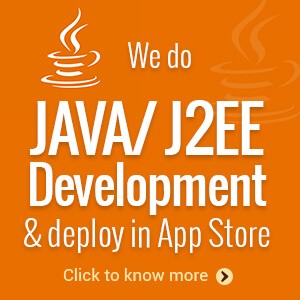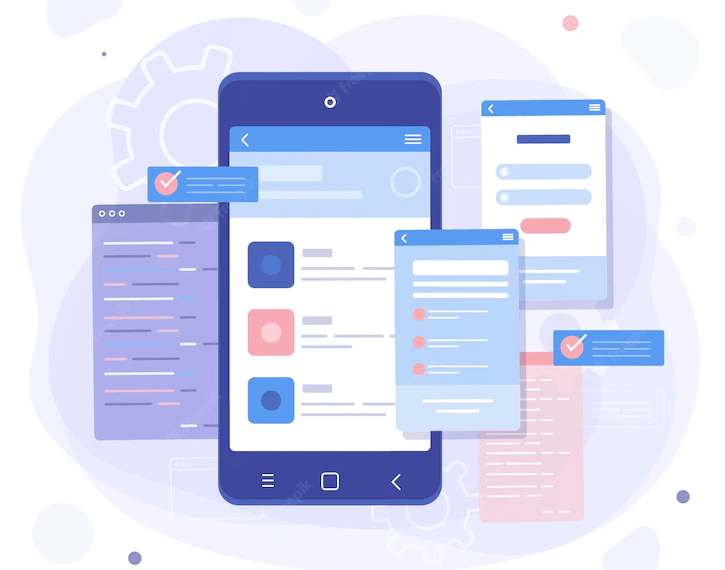Design pattern is in general-a repeatable solution to a commonly occurring issue in software designs. These patterns can also be considered as a finished design which can be used directly into the code or a template for how to solve a particular issue.
Object oriented design patterns typically show relationships and interactions between objects or classes, without specifying the final application classes or objects that are involved.
Whereas, algorithms do not offer any details of design patterns, since they resolve computational problems rather than design issues.
On the other hand, pattern specifies a solid solution to a recurring design issues, placing particular process on the context and the surrounding problem as well as the consequences and impact of solution.
This provides a collection of patterns which you can use in the context of designing Java 2 Platform and Enterprise Edition (J2EE) applications.
Core J2EE Patterns provides more detail on J2EE patterns and is an excellent resource that can be integrated on the website. Developing and designing patterns leverages the developer community’s collective experience by sharing issues and solutions.
A design pattern must capture a problem’s overview and context, a possible option and the solution simultaneously.
In the J2EE application architecture, we can split up design patterns into two categories: general software development patterns and those patterns that overlook specific J2EE challenges.
J2EE- design pattern verifies lesser known issues which solid application architecture should resolve.
Reasons to implement Patterns:
- Patterns reflect the knowledge, experience and insights of developers who have smoothly used these patterns in their own work.
- Patterns provide a rough solution as necessary that can be adapted to different problems.
- Patterns provide a generic vocabulary of solutions that can express heavy solutions succinctly.
Understanding J2EE Design Patterns
J2EE Design Patterns are tried-and-tested solutions to recurring design problems encountered in enterprise application development.
These patterns provide a structured approach to solving specific challenges and promote code reusability, modularity, and maintainability. Some common J2EE design patterns include:
- MVC (Model-View-Controller):
Separates the application into three components—Model (data logic), View (user interface), and Controller (flow control)—enhancing maintainability and flexibility. - DAO (Data Access Object):
Abstracts the interaction with databases, providing a centralized and consistent way to manage data access. - Singleton:
Ensures that a class has only one instance and provides a global point of access to it, beneficial for managing shared resources. - Facade:
Provides a unified interface to a set of interfaces in a subsystem, simplifying complex systems for clients. - Observer:
Defines a dependency between objects, ensuring that when one object changes state, its dependents are notified and updated automatically.
Deciphering the Multi-Tier Architecture
Enterprise applications are often complex and require a structured architecture for effective development and management.
The multi-tier architecture, also known as n-tier architecture, divides an application into distinct layers or tiers, each responsible for a specific aspect of functionality. The common tiers include:
- Presentation Tier:
Also known as the client tier, this layer focuses on user interface interactions. It handles user requests, displays information, and captures user input. - Business Logic Tier:
This tier contains the application’s business logic and rules. It processes user input, interacts with databases through the data access layer, and implements the core functionalities of the application. - Integration Tier:
Also known as the middleware tier, this layer handles communication between the presentation tier and the business logic tier. It often involves components like Enterprise JavaBeans (EJB) for managing distributed transactions and messaging. - Resource Tier:
This tier represents the data storage and management layer. It includes databases, file systems, and other resources that store and manage application data.
Benefits and Best Practices
Mastering J2EE design patterns and understanding the multi-tier architecture yields several benefits, including:
- Scalability:
The modular nature of tiers and the reusable solutions of design patterns make scaling applications more manageable. - Maintenance:
The separation of concerns and code reuse simplify maintenance and updates. - Performance:
Efficient data flow and reduced network overhead contribute to optimal application performance. - Team Collaboration:
J2EE patterns and tier architecture facilitate teamwork by offering a common vocabulary and structured approach.
Common uses of Design Patterns:
- Front Controller is a container to hold common processing logic that occurs within the ‘presentation’ tier and which may otherwise be inaccurately put in the ‘View’.
A controller handles requests and manages content retrieval, view management, security, navigation, delegating to a Dispatcher component to dispatch to a View. - Business Delegate reduces coupling between remote tiers and provides an entry point for accessing remote services in the ‘Model’.
A Business Delegate might also cache details data as required to improve performance. A Business Delegate encapsulates a ‘Session Façade’ and manages to one-to-one relationship with that ‘Session Façade’. A Business Delegate invokes a ‘Session Façade’ for An Application Services. - Service Locator encapsulates the implementation mechanisms for looking up business service details. A Service Locator used by a ‘Business Delegate’ connects to a ‘Session Façade’. Other services like web services and business-tier services can use a Service Locator.
- Session Façade provides coarse-grained services to the clients by hiding the complexities of the business service interactions. A ‘Session Façade’ might call several Application Service implementations or Business Objects. A ‘Session Façade’ can also encapsulate a Value List Handler.
- Business Object implements your conceptual domain model using an object model. Business Objects differentiates business logic and data into a separate layer in the application. Business Objects programmatically represents persistent objects and can be transparently continued using Domain Store.
- Data Access Object enables loose coupling between the resources and business tiers. ‘Data Access Object’ covers all the data access logic into CRUD data from a persistent store. ‘Data Access Object’ does work on ‘Transfer Object’ to send and receive data.
Conclusion:
These design patterns captures potential problems when using the various J2EE-specified technologies and supports developers to construct application architecture’s requirements. For example-The locality Front Controller design pattern, transforms unstructured servlet codes into a controller of the refined graphical user interface.
Related Questions
What are J2EE Design Patterns and why are they important in enterprise application development?
J2EE Design Patterns are reusable solutions to common design problems encountered in enterprise application development.
They promote code reusability, modularity, and maintainability by offering structured approaches to solving challenges. J2EE Design Patterns ensure that developers follow best practices, resulting in more robust and scalable applications.
How do J2EE Design Patterns enhance the efficiency of different tiers in the multi-tier architecture?
J2EE Design Patterns seamlessly complement the multi-tier architecture. For example, patterns like MVC enhance user interface management in the presentation tier, while patterns like Business Delegate optimize communication between the presentation and business logic tiers. T
hese patterns ensure that each tier is well-structured, efficient, and interacts seamlessly with other tiers.
What is the significance of the multi-tier architecture in enterprise application development?
The multi-tier architecture divides an application into distinct layers, each with specific responsibilities. This structure enhances scalability, maintainability, and performance.
The presentation tier focuses on user interface, the business logic tier handles core functionalities, the integration tier manages communication, and the resource tier deals with data storage and management.
How do J2EE Design Patterns contribute to the scalability of enterprise applications?
J2EE Design Patterns promote modular and reusable code, which simplifies scaling. With patterns like Singleton and Data Access Object (DAO), developers can efficiently manage shared resources and data access, ensuring that as the application grows, it can be scaled without sacrificing performance or complexity.
Can you provide an example of how a J2EE Design Pattern enhances a specific tier in the multi-tier architecture?
Certainly. Consider the MVC pattern. In the presentation tier, the Model-View-Controller (MVC) pattern separates data (Model), user interface (View), and control flow (Controller). This separation enhances maintainability as changes in one component don’t affect the others.
The Controller manages user interactions, the Model handles data logic, and the View renders information. This clear separation simplifies development and updates in the presentation tier.




